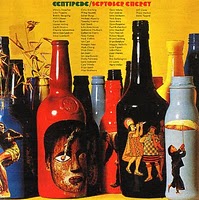 This ominous double LP has been sitting there in my record collection since 1973. I don’t know why I haven’t played it for ages, I used to play it a lot. So, the first of October is an apt day to play and review Septober Energy. It is a project assembled by Keith Tippett and produced by Robert Fripp (both members of King Crimson at the time). These two gathered virtually the entire creative British music scene – a who-is-who of some 50 musicians, horns, brass, strings, singers, Alan Skidmore, Elton Dean, Ian Carr, Alan Skidmore, Paul Rutherford, John Marshall, Robert Wyatt, Ian MacDonald, Boz Burrell, Julie Driscoll (Tippett at the time of recording), just to name a few. The music sounds as if Tippett and Fripp were struggling to find a home for their jazzier, freer ideas which they couldn’t incorporate into the King Crimson concept.
This ominous double LP has been sitting there in my record collection since 1973. I don’t know why I haven’t played it for ages, I used to play it a lot. So, the first of October is an apt day to play and review Septober Energy. It is a project assembled by Keith Tippett and produced by Robert Fripp (both members of King Crimson at the time). These two gathered virtually the entire creative British music scene – a who-is-who of some 50 musicians, horns, brass, strings, singers, Alan Skidmore, Elton Dean, Ian Carr, Alan Skidmore, Paul Rutherford, John Marshall, Robert Wyatt, Ian MacDonald, Boz Burrell, Julie Driscoll (Tippett at the time of recording), just to name a few. The music sounds as if Tippett and Fripp were struggling to find a home for their jazzier, freer ideas which they couldn’t incorporate into the King Crimson concept.
There are moments of grandezza, pathos, Jazz-Rock passages, Free Jazz – both loud and aggressive and soft and gentle, Bolero-like crescendos, concert music, sheet music, smashing arrangements and orchestrations, all of it played live in the studio and simultaneously recorded. Of course, due to the concept, there are also passages which don’t succeed or which are too long – I’m thinking of the finale. Septober Energy has been put down as megalomania, usually from King Crimson fans. I don’t agree. It’s difficult music, certainly. You have to make an effort to follow the music. It might just not be your taste. But that doesn’t make it a flop. Septober Energy is like nothing else from the early seventies, it’s an important musical document from one of the most exiting musical phases in the twentieth century. I’m glad I re-discovered this album. It’s out on CD and should not be overlooked. –Yofriend
Jive Time Turntable
The Allman Brothers Band “At Fillmore East” (1971)
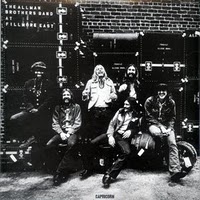 If I was pressed to name the most talented rock band, in terms of pure ability to play their instruments, I would choose the Allman Brothers. The first three tracks, standard blues fair, won’t win any converts. They are played very well, of course, but they’re just the appetizer for the main course. The 20-minute “You Don’t Love Me” kicks off the awe-inspiring portion of the album, show-casing the band’s brilliant interplay and individual contributions. Then, amazingly, “Hot ‘Lanta” does the same thing, even better, in just over five minutes. Finally, “In Memory of Elizabeth Reed” and “Whipping Post” deliver 30-plus minutes of the greatest live rock performance I’ve ever heard. The communication between the entire band verges on telepathic, but you’d have to come up with a new super-power to describe the connection between Dickie and Duane. With most live recordings, I get bored by the time a song hits the six-minute mark. Here, even the ample running time seems cruelly short. –Lucas
If I was pressed to name the most talented rock band, in terms of pure ability to play their instruments, I would choose the Allman Brothers. The first three tracks, standard blues fair, won’t win any converts. They are played very well, of course, but they’re just the appetizer for the main course. The 20-minute “You Don’t Love Me” kicks off the awe-inspiring portion of the album, show-casing the band’s brilliant interplay and individual contributions. Then, amazingly, “Hot ‘Lanta” does the same thing, even better, in just over five minutes. Finally, “In Memory of Elizabeth Reed” and “Whipping Post” deliver 30-plus minutes of the greatest live rock performance I’ve ever heard. The communication between the entire band verges on telepathic, but you’d have to come up with a new super-power to describe the connection between Dickie and Duane. With most live recordings, I get bored by the time a song hits the six-minute mark. Here, even the ample running time seems cruelly short. –Lucas
Starcastle “Starcastle” (1976)
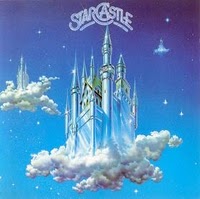 Imagine a group of children raised in total isolation, their only stimulus coming from daily spinnings of Fragile and Close to the Edge. If they were to grow up and make an album of their own, it would be Starcastle. Long-winded compositions full of buzzing Rickenbacker bass, precision drumming and hot shot guitars, a Wakeman-esque pallet of synth tones, and high-pitched vocals delivering nonsensical lyrics of elemental wonder, it’s all here. If there’s anything to separate Starcastle from Yes, it’s that the ‘castle seem to be even more uncompromising in their devotion to the most progressive elements of the sound, generally eschewing the sense of pop smarts that handed Yes a few hits and radio favorites along the way, in favor of a rabid working of the ornate and extravagant end of the spectrum. Yeah, it’s derivativeness is obvious, but it doesn’t change the fact that Starcastle still plays like a wet dream for acne-scarred starship troopers. –Ben
Imagine a group of children raised in total isolation, their only stimulus coming from daily spinnings of Fragile and Close to the Edge. If they were to grow up and make an album of their own, it would be Starcastle. Long-winded compositions full of buzzing Rickenbacker bass, precision drumming and hot shot guitars, a Wakeman-esque pallet of synth tones, and high-pitched vocals delivering nonsensical lyrics of elemental wonder, it’s all here. If there’s anything to separate Starcastle from Yes, it’s that the ‘castle seem to be even more uncompromising in their devotion to the most progressive elements of the sound, generally eschewing the sense of pop smarts that handed Yes a few hits and radio favorites along the way, in favor of a rabid working of the ornate and extravagant end of the spectrum. Yeah, it’s derivativeness is obvious, but it doesn’t change the fact that Starcastle still plays like a wet dream for acne-scarred starship troopers. –Ben
Grateful Dead “Grateful Dead” (1967)
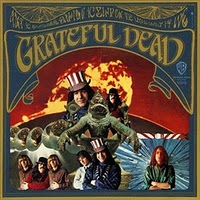 The Dead were never a studio band, and their first record is even overlooked by the most ardent Deadheads. It’s easy to see why; here they sound more like a garage band: raw, loud, way fast, and with only one drummer! Recorded in LA, it’s rumored that the band cut these tracks in just a few hours while hopped up on Ritalin (an irony considering the superhuman attention span required for the long-winded jams of their later years). The opener, “The Golden Road…” sets the momentum for a series of short, bluesy, breakneck tempo numbers that don’t slow down until the beginning of Side Two: a cover of Bonnie Dobson’s post-apocalyptic “Where is everybody?” ballad, “Morning Dew”. But even here there’s a sense of visceral urgency that the band seldom recaptured on stage or off. The closing prison song cover, “Viola Lee Blues”, more closely resembles the exploratory and improvisational sound that would soon become their stock in trade, but with just enough sloppiness and dissonance to keep things interesting. From here, the Dead would inarguably record and perform some more great music while vocalist/organist Pigpen still had his liver, but never again with such reckless abandon. –Richard P
The Dead were never a studio band, and their first record is even overlooked by the most ardent Deadheads. It’s easy to see why; here they sound more like a garage band: raw, loud, way fast, and with only one drummer! Recorded in LA, it’s rumored that the band cut these tracks in just a few hours while hopped up on Ritalin (an irony considering the superhuman attention span required for the long-winded jams of their later years). The opener, “The Golden Road…” sets the momentum for a series of short, bluesy, breakneck tempo numbers that don’t slow down until the beginning of Side Two: a cover of Bonnie Dobson’s post-apocalyptic “Where is everybody?” ballad, “Morning Dew”. But even here there’s a sense of visceral urgency that the band seldom recaptured on stage or off. The closing prison song cover, “Viola Lee Blues”, more closely resembles the exploratory and improvisational sound that would soon become their stock in trade, but with just enough sloppiness and dissonance to keep things interesting. From here, the Dead would inarguably record and perform some more great music while vocalist/organist Pigpen still had his liver, but never again with such reckless abandon. –Richard P
The Replacements “Tim” (1985)
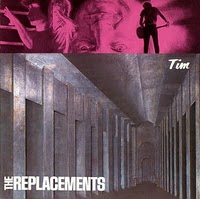 After the skillful Let It Be, Paul Westerberg and the boys decided to make another essential classic rock album, only this time they got even better. Tim is loaded up with first-rate tunes such as the lasting “Bastards of Young” accompanied with the sweet “Kiss Me on the Bus.” Let’s not forget the sacred “Left of the Dial” and the touching “Here Comes a Regular.” One of my personal favorites is “Swingin’ Party,” it’s so catchy and complete with solitude that it’s one of the very few songs I never get tired of. “Hold My Life” is terrific and “Little Mascara” is compelling at times. Every last song on this disc is superlative rock ‘n’ roll. If I was pressed to make a pick for the must hear Replacements album, it just might have to go to Tim. How this wasn’t one of the best selling albums of the 80’s is beyond me. –Jason
After the skillful Let It Be, Paul Westerberg and the boys decided to make another essential classic rock album, only this time they got even better. Tim is loaded up with first-rate tunes such as the lasting “Bastards of Young” accompanied with the sweet “Kiss Me on the Bus.” Let’s not forget the sacred “Left of the Dial” and the touching “Here Comes a Regular.” One of my personal favorites is “Swingin’ Party,” it’s so catchy and complete with solitude that it’s one of the very few songs I never get tired of. “Hold My Life” is terrific and “Little Mascara” is compelling at times. Every last song on this disc is superlative rock ‘n’ roll. If I was pressed to make a pick for the must hear Replacements album, it just might have to go to Tim. How this wasn’t one of the best selling albums of the 80’s is beyond me. –Jason
Brian Eno “Another Green World” (1975)
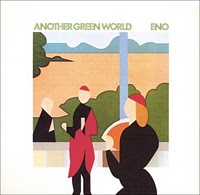 Another Green World is a mix between the instrumental ambient music Eno was making at the time, and the relatively more structured pop/rock songs he had released on albums like Here Come the Warm Jets. Somehow, the combination works even better than either of individual elements does on their own, as this is his best album. More than anything, Another Green World is about atmosphere. In that regard, it’s dreamy soundscapes remind me of Miles’ In a Silent Way. –Lucas
Another Green World is a mix between the instrumental ambient music Eno was making at the time, and the relatively more structured pop/rock songs he had released on albums like Here Come the Warm Jets. Somehow, the combination works even better than either of individual elements does on their own, as this is his best album. More than anything, Another Green World is about atmosphere. In that regard, it’s dreamy soundscapes remind me of Miles’ In a Silent Way. –Lucas
Cheap Trick “At Budokan” (1979)
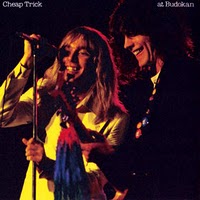 At Budokan brought Cheap Trick to the masses with a vibrant live set that captured the band in front of an adoring Japanese audience. Entirely overlooked on the original, the band’s debut is represented by “ELO Kiddies” and “Speak Now or Forever Hold Your Peace,” while essential In Color Tricksters “Downed” and “Southern Girls” are cranked to arena-rockin’ levels in the same way the live “I Want You to Want Me” blew the lid off the studio version to achieve hit status. Elsewhere, “Auf Wiedersehen” and “High Roller” are featured from Heaven Tonight, as is the slow burning non-LP ballad “Can’t Hold On.” While the original At Budokan is a potent single album’s worth of smoldering melodic rock fire, 1998’s expanded “At Budokan: The Complete Concert” proves you can’t get too much of a good thing. –Ben
At Budokan brought Cheap Trick to the masses with a vibrant live set that captured the band in front of an adoring Japanese audience. Entirely overlooked on the original, the band’s debut is represented by “ELO Kiddies” and “Speak Now or Forever Hold Your Peace,” while essential In Color Tricksters “Downed” and “Southern Girls” are cranked to arena-rockin’ levels in the same way the live “I Want You to Want Me” blew the lid off the studio version to achieve hit status. Elsewhere, “Auf Wiedersehen” and “High Roller” are featured from Heaven Tonight, as is the slow burning non-LP ballad “Can’t Hold On.” While the original At Budokan is a potent single album’s worth of smoldering melodic rock fire, 1998’s expanded “At Budokan: The Complete Concert” proves you can’t get too much of a good thing. –Ben
Miles Davis “Nefertiti” (1968)
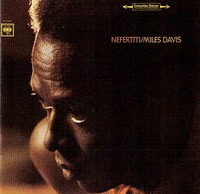 I wish I’d been a fly on the wall, no, a fly on producer Teo Macero’s shoulder during the classic sessions which yielded this album and the rest of the quintet’s catalogue in the late 60s. Creative tension probably doesn’t even begin to describe the atmosphere. Strangely, there are no Davis compositions here, but Wayne Shorter weighs in with the first two tracks – the slightly off key, circular title track and beautiful Hand Jive. On the latter, the sax is a true wonder in his hands, soulful, searching, graceful. I much prefer the version of Herbie Hancock’s Riot heard here, rather than on his own album Speak Like A Child. It’s slightly faster, with an almost mambo, Latin sounding tempo. –Neal
I wish I’d been a fly on the wall, no, a fly on producer Teo Macero’s shoulder during the classic sessions which yielded this album and the rest of the quintet’s catalogue in the late 60s. Creative tension probably doesn’t even begin to describe the atmosphere. Strangely, there are no Davis compositions here, but Wayne Shorter weighs in with the first two tracks – the slightly off key, circular title track and beautiful Hand Jive. On the latter, the sax is a true wonder in his hands, soulful, searching, graceful. I much prefer the version of Herbie Hancock’s Riot heard here, rather than on his own album Speak Like A Child. It’s slightly faster, with an almost mambo, Latin sounding tempo. –Neal
Talk Talk “Laughing Stock” (1991)
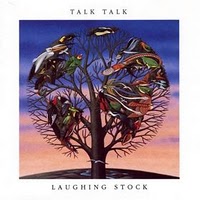 They started [in 1982] with “The Party’s Over” – that’s precisely how ten years later, Talk Talk’s last album sounds – the party’s over. Their music always contained elements of what Talk Talk would eventually develop into on their last two LPs, but who would have expected such a radical mutation, from synth Pop to practically classical music? Laughing Stock continues where Spirit Of Eden ended; the two LPs could be a double album, and anyone who loves one of the two should make sure he/she got both. Myrrhman starts the album with searching for structure. A mixture of Blues and modern classical music, the music is played on acoustic instruments. With Ascension Day, a groove is introduced; there are Jazz influences. The mighty and hymnic After the Flood, my favorite song of this album, is the closest Laughing Stock gets to resemble regular Pop, only its length (over 9 minutes) shuts it off from Radio play. It flows directly into the spacious and ambient Taphead. A 6/8 beat brings back the motion on the blissful and meditative New Grass – a Bach choral (from the St. Matthew’s passion – O Haupt voll Blut und Wunden) appears, reinforcing the religious mood of the album. The final song, Runeii, starts with only voice and guitar, later, organ, piano and drums fade in and out; it’s a quiet windup with a hippie feel. Laughing Stock is the ultimate step of Talk Talk’s musical search into the soul. Commercially, it was a fiasco, and Laughing Stock, with its lengthy and introvert songs, sounds as if Talk Talk never planned to compete with this LP on the Pop market; it remains their last album. As a creative effort within the realms of Pop music, however, it’s a victory, a timeless beauty and one of the best Pop records of the 90s. –Yofriend
They started [in 1982] with “The Party’s Over” – that’s precisely how ten years later, Talk Talk’s last album sounds – the party’s over. Their music always contained elements of what Talk Talk would eventually develop into on their last two LPs, but who would have expected such a radical mutation, from synth Pop to practically classical music? Laughing Stock continues where Spirit Of Eden ended; the two LPs could be a double album, and anyone who loves one of the two should make sure he/she got both. Myrrhman starts the album with searching for structure. A mixture of Blues and modern classical music, the music is played on acoustic instruments. With Ascension Day, a groove is introduced; there are Jazz influences. The mighty and hymnic After the Flood, my favorite song of this album, is the closest Laughing Stock gets to resemble regular Pop, only its length (over 9 minutes) shuts it off from Radio play. It flows directly into the spacious and ambient Taphead. A 6/8 beat brings back the motion on the blissful and meditative New Grass – a Bach choral (from the St. Matthew’s passion – O Haupt voll Blut und Wunden) appears, reinforcing the religious mood of the album. The final song, Runeii, starts with only voice and guitar, later, organ, piano and drums fade in and out; it’s a quiet windup with a hippie feel. Laughing Stock is the ultimate step of Talk Talk’s musical search into the soul. Commercially, it was a fiasco, and Laughing Stock, with its lengthy and introvert songs, sounds as if Talk Talk never planned to compete with this LP on the Pop market; it remains their last album. As a creative effort within the realms of Pop music, however, it’s a victory, a timeless beauty and one of the best Pop records of the 90s. –Yofriend
Gene Clark “Gene Clark With The Gosdin Brothers” (1967)
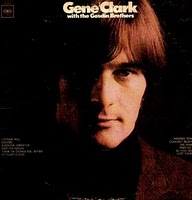 After leaving the Byrds, Clark should’ve been a huge success. But in a way I’m selfishly glad that he remains one of the best kept secrets in popular music, widely influential but entirely under the radar of popular recognition. While his Dylanesque White Light and his coked-out baroque country masterpiece, No Other, are generally the ones most often mentioned, this one, which to all intents and purposes is his solo debut (the Gosdin brothers playing an integral role but having little to do with the album’s composition), is a record of tremendous scope for its modest length, with flashes of country, bluegrass, baroque pop, psychedelia—and more than an occasional nod to the spare melodicism of Rubber Soul. It’s the kind of record only a singer and songwriter as talented as Clark could pull off without coming off as pretentious or boring or unfocused. This album is none of those things. It frequently beats the Byrds at their own game, so fans of that group’s ilk should get this posthaste. But I’d recommend this to anyone with an interest in the best stuff from the mid 60s. –Will
After leaving the Byrds, Clark should’ve been a huge success. But in a way I’m selfishly glad that he remains one of the best kept secrets in popular music, widely influential but entirely under the radar of popular recognition. While his Dylanesque White Light and his coked-out baroque country masterpiece, No Other, are generally the ones most often mentioned, this one, which to all intents and purposes is his solo debut (the Gosdin brothers playing an integral role but having little to do with the album’s composition), is a record of tremendous scope for its modest length, with flashes of country, bluegrass, baroque pop, psychedelia—and more than an occasional nod to the spare melodicism of Rubber Soul. It’s the kind of record only a singer and songwriter as talented as Clark could pull off without coming off as pretentious or boring or unfocused. This album is none of those things. It frequently beats the Byrds at their own game, so fans of that group’s ilk should get this posthaste. But I’d recommend this to anyone with an interest in the best stuff from the mid 60s. –Will
Eric Dolphy “Out There” (1960)
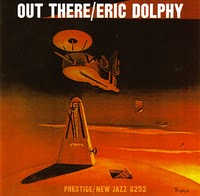 At first Out There sounds like an Ornette Coleman album, but then you realize that Eric Dolphy has twisted Coleman’s weird ideas around his even stranger finger. I mean…legendary bassist Ron Carter plays cello. Cello!!! George Duvivier plays bass. What a stroke of genius. There’s less musicians on Out There than on Dolphy masterpiece Out To Lunch. In fact, Dolphy is the only horn period. He puts in mind blowing solos on alto sax, flute, b-flat clarinet and bass clarinet. If I had to choose the most talented reed and woodwind player of all time it would be a tie between Eric Dolphy and Rahsaan Roland Kirk. While Kirk absolutely mastered more than 50 instruments, Dolphy can make a clarinet sound drop-dead sexy one moment and convince you that the world is ending the next. The same goes for any instrument that he played. “Sketch of Melba” has some stunning flute playing. –Rob
At first Out There sounds like an Ornette Coleman album, but then you realize that Eric Dolphy has twisted Coleman’s weird ideas around his even stranger finger. I mean…legendary bassist Ron Carter plays cello. Cello!!! George Duvivier plays bass. What a stroke of genius. There’s less musicians on Out There than on Dolphy masterpiece Out To Lunch. In fact, Dolphy is the only horn period. He puts in mind blowing solos on alto sax, flute, b-flat clarinet and bass clarinet. If I had to choose the most talented reed and woodwind player of all time it would be a tie between Eric Dolphy and Rahsaan Roland Kirk. While Kirk absolutely mastered more than 50 instruments, Dolphy can make a clarinet sound drop-dead sexy one moment and convince you that the world is ending the next. The same goes for any instrument that he played. “Sketch of Melba” has some stunning flute playing. –Rob
Rush “Hemispheres” (1978)
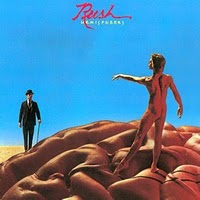 Hemispheres is the culmination of all that Rush had been striving for since Neil Peart ascended to the drum stool back on Fly By Night. The side-long title track is a winding conceptual piece that one-ups 2112 in it’s uniformity and metaphorical marriage of paperback fantasy with egghead philosophy. A continuation of A Farewell To Kings’ “Cygnus X-1” (on tour Rush would play both pieces together, forming one 30-minute monstrosity), “Hemispheres” tells a convoluted tale of the “battle of heart and mind” that dabbles in Greek mythology and Nietzsche-inspired psychology, set to an ever-unfolding barrage of head-spinning riffs. But it’s side two of Hemispheres that ensures it’s classic status, with the brief, but hard-hitting and lyrically direct “Circumstances,” ably leading things off. “The Trees,” an almost Brothers Grimm styled allegorical tale of the pitfalls of collectivism, quickly became a Rush standard, as did the multi-part instrumental “La Villa Strangiato.” Subtitled with a wink, “An Exercise in Self-Indulgence,” the showcase is a tour-de-force of prog-rock muscle that probably inspired half of the kids who heard it to hone their musical chops, while the other half headed straight for the record store’s newly-added punk bin. But in it’s own way, Hemispheres is as uncompromising a statement as any, and with it Rush carved a permanent niche as leaders of their own pencil-necked revolution. –Ben
Hemispheres is the culmination of all that Rush had been striving for since Neil Peart ascended to the drum stool back on Fly By Night. The side-long title track is a winding conceptual piece that one-ups 2112 in it’s uniformity and metaphorical marriage of paperback fantasy with egghead philosophy. A continuation of A Farewell To Kings’ “Cygnus X-1” (on tour Rush would play both pieces together, forming one 30-minute monstrosity), “Hemispheres” tells a convoluted tale of the “battle of heart and mind” that dabbles in Greek mythology and Nietzsche-inspired psychology, set to an ever-unfolding barrage of head-spinning riffs. But it’s side two of Hemispheres that ensures it’s classic status, with the brief, but hard-hitting and lyrically direct “Circumstances,” ably leading things off. “The Trees,” an almost Brothers Grimm styled allegorical tale of the pitfalls of collectivism, quickly became a Rush standard, as did the multi-part instrumental “La Villa Strangiato.” Subtitled with a wink, “An Exercise in Self-Indulgence,” the showcase is a tour-de-force of prog-rock muscle that probably inspired half of the kids who heard it to hone their musical chops, while the other half headed straight for the record store’s newly-added punk bin. But in it’s own way, Hemispheres is as uncompromising a statement as any, and with it Rush carved a permanent niche as leaders of their own pencil-necked revolution. –Ben


